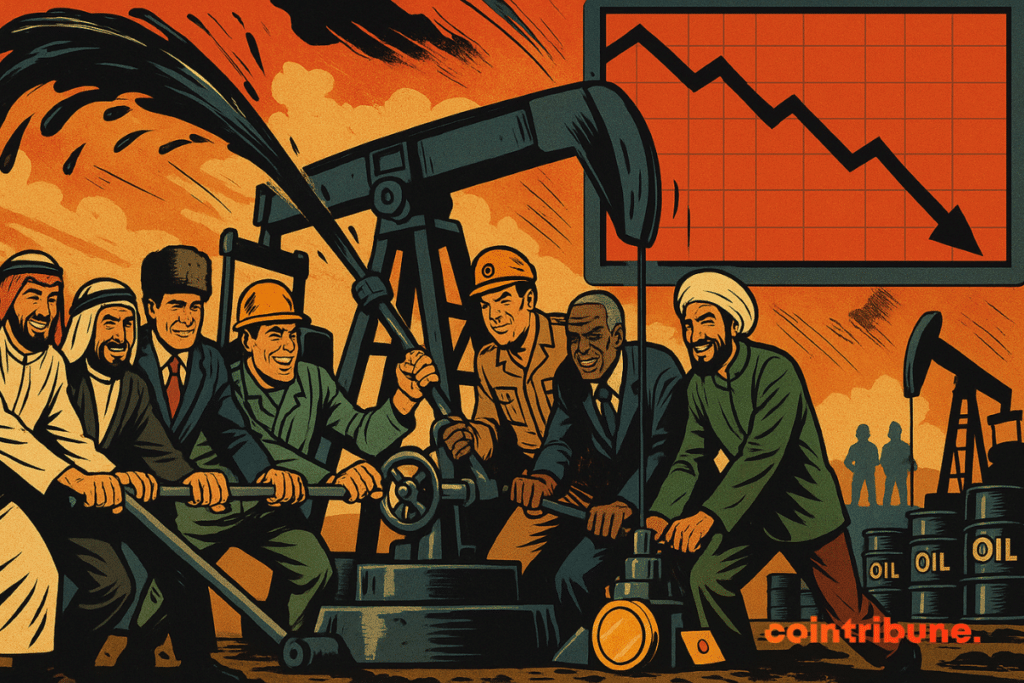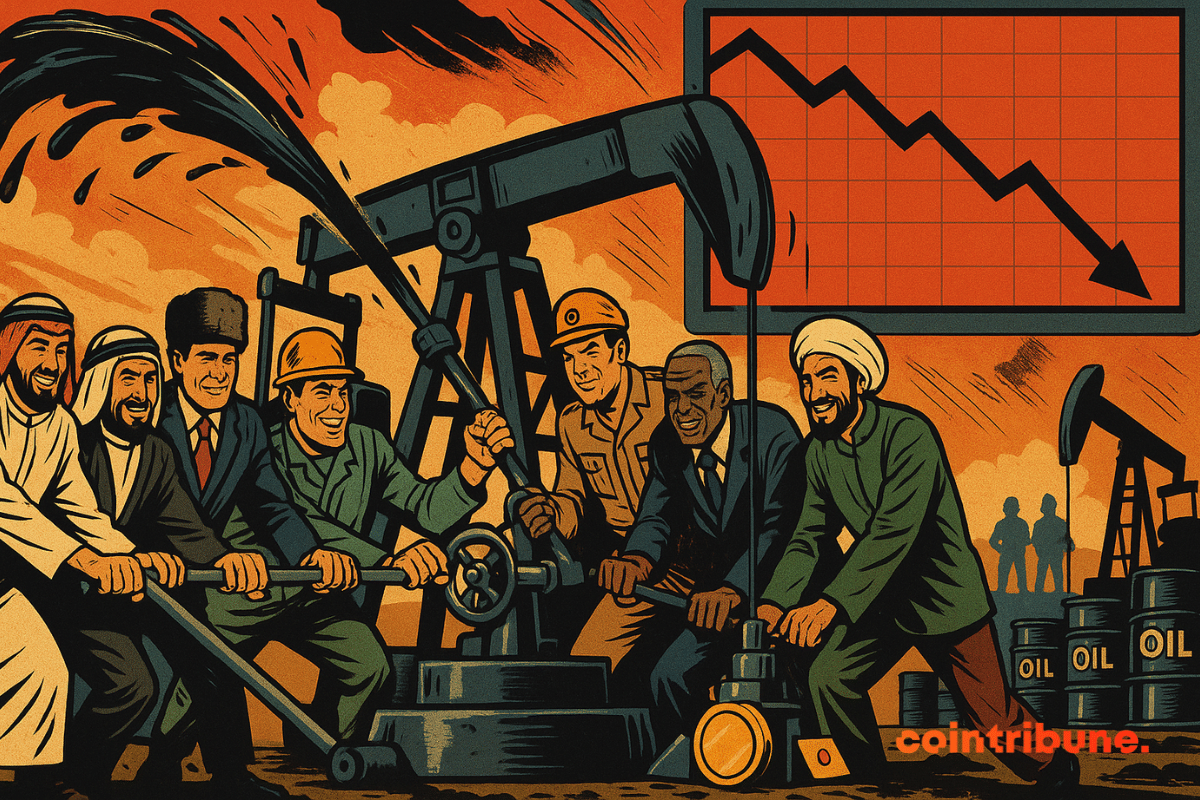While oil prices are falling and demand remains gloomy, OPEC+ surprises by announcing a massive increase in production in June. Eight members of the cartel will break the recent caution and revive the uncertainty about under tension. There is a possible geopolitical and economic turning point behind this reverse, between the calculated Recovest strategy and the risk strategy. This decision can well rework global energy balances.

In short
- Eight OPEC+members, including Saudi Arabia and Russia, announces in June 2025 a huge increase in oil production.
- This increase reaches 411,000 barrels a day, three times more than 137,000 originally planned.
- This maneuver could also strengthen diplomatic relations between Riyadh and Trump’s administration, which required more production.
- In the medium term, this change could revive the price war and disrupt the balance of world oil markets.
Unexpected increase in force: OPEC+ triple its cadence
The announcement was published this Saturday, May 3, 2025. Eight OPEC+ Member States will produce in 411,000 other barrels a day, at the same level as in May, which swept the initial plan, which provided only 137,000.
This decision means a country at the core of a cartel such as Saudi Arabia, Russia, Kuwait, Algeria or Oman. Analyst Jorge Leon of Rystad Energy did not cheat on his words and declares:
OPEC+ just launched a bomb on the oil market.
This statement reflects the size of the shock caused in the markets, already weakened by the global demand at the half mast.
Turnover details confirm a deep change of strategic orientation of the cartel. Where OPEC+ has previously favored caution and targeted cuts to support prices, it now accepts aggressive bid policy, motivated by the market challenges. Here are the key points of this reorientation:
- The amount concerned: 411 000 barrels/the next day will be launched in June, three times more than 137,000 originally planned;
- Participating countries: Saudi Arabia, Russia, Iraq, United Arab Emirates, Kuwait, Kazakhstan, Algeria and Oman, some of which include the Bric Alliance;
- The justification displayed: The desire to break the rarity strategy that prevailed from OPEC+ 2016.
- Market context: Current oil prices are around $ 60 per barrel, which is a historically low level for such a revival.
This turnover point intervenes in the environment already under pressure and is one of the most important gestures of the cartel from Pandemie Covid-19. The report is clear: OPEC+ leaders no longer want to just control the market balance, intend to win it.
Hidden goals and geopolitical balance
In addition to numbers, the initiative brings a stamp of a carefully calibrated political calculation. The intensification of their production is not only trying to flood the market. They also send a strategic message to the United States and especially to Donald Trump administration.
This massive opening of the valves partly responds to the explicit Washington request: “Shortly after boarding, US President asked Saudi Arabia to create more to reduce the courses.” » In this way, Riyadh could hope to strengthen his relations with the White House and, in return, to relax certain diplomatic or commercial pressures.
Another basic problem and rarely mentioned publicly is the management of the internal differences in the cartel. Several experts develop the idea that this increase in production would focus on the sanction of members “Cheaters” OPEC+, those who do not always respect quotas.
By increasing the volume available on the market, the group leader is imposing indirect pressure on these players, forcing them to choose between harmonization or marginalization. This could also reflect the desire to crush the edges of manufacturers who are not less able to survive at lower prices in Latin America or in Sub -Saharan Africa.
In the medium term, this strategy could deeply bounce the cards. By promoting abundance, rather than rarity, the risk of long -term collapse at raw prices, a dangerous bet on the economy, is largely dependent on this pension. If the markets consider it a return to the price war, the consequences could also be expanded to energy policy, currencies of production countries and the stability of developing markets. Of course, this change will have consequences far beyond the oil sector. It could take the strategic choices of investors, even in the ecosystem, internally associated with global markets.
Maximize your Cointribne experience with our “Read to Earn” program! For each article you read, get points and approach exclusive rewards. Sign up now and start to accumulate benefits.
A graduate of the Toulouse and the Blockchain Consultant Certification certification holder and I joined the adventure of Cointribuna in 2019. I convinced of the potential of blockchain to transform many economy sectors, committing to raising awareness and informing the general public about how the ecosysty developed. My goal is to allow everyone to better understand blockchain and take the opportunity they offer. I try to provide an objective analysis of messages every day, decrypt trends on the market, hand over the latest technological innovations and introduce the economic and social issues of this revolution.
Renunciation
The words and opinions expressed in this article are involved only by their author and should not be considered investment counseling. Do your own research before any investment decision.







